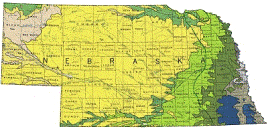United States Geological Survey

United States Geological Survey: Staff Publications
Document Type
Article
Date of this Version
2015
Citation
2016 by The Society for Freshwater Science
DOI: 10.1086/684491
Abstract
Human alteration of the global P cycle has led to widespread P loading in freshwater ecosystems. Much research has been devoted to the capacity of wetlands and lakes to serve as long-term sinks for P inputs from the watershed, but we know much less about the potential of headwater streams to serve in this role. We assessed storage and retention of P in biotic and abiotic compartments after an 8-y experimental P addition to a 1st-order stream in a Neotropical wet forest. Sediment P extractions indicated that nearly all P storage was in the form of Fe- and Al-bound P (∼700 μg P/g dry sediment), similar to nearby naturally high-P streams. At the end of the enrichment, ∼25% of the total P added over the 8-y study was still present in sediments within 200 m of the injection site, consistent with water-column measurements showing sustained levels of high net P uptake throughout the experiment. Sediment P declined to baseline levels (∼100 μg P/g dry sediment) over 4 y after the enrichment ended. Leaf-litter P content increased nearly 2× over background levels during P enrichment and was associated with a 3× increase in microbial respiration rates, although these biotic responses were low compared to nearby naturally high- P streams. Biotic storage accounted for <0.03% of retention of the added P. Our results suggest that the high sorption capacity of these sediments dampened the biotic effects of P loading and altered the timing and quantity of P exported downstream.
Included in
Geology Commons, Oceanography and Atmospheric Sciences and Meteorology Commons, Other Earth Sciences Commons, Other Environmental Sciences Commons


Comments
Freshwater Science. 2016. 35(1):1–11